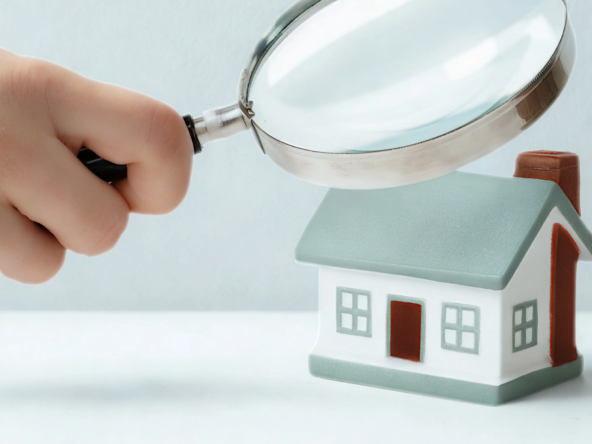If you’re asking “Is Eagle, Idaho a good place to buy an investment property in Eagle Idaho?”, the short answer is: yes — with caveats. Eagle, nestled in the Treasure Valley and just west of Boise, offers a compelling mix of location, quality of life, and price appreciation. But as with any real estate investment, success depends on smart property selection, understanding local dynamics, and managing risks.
Below we’ll explore pros, cons, key metrics, neighborhood picks, financing tips, and due diligence to help you decide if Eagle Idaho real estate is right for your portfolio.
What’s Driving Eagle’s Appeal to Investors?
-
Proximity to Boise & job centers. Eagle is part of the Boise metro area. Its residents enjoy access to metropolitan amenities while retaining a more suburban, tranquil feel.
-
Strong demand & price appreciation. Over the past year, Eagle home values have remained high. Zillow estimates the average home value in Eagle is about $796,099, up modestly year-over-year. Zillow Meanwhile, Redfin shows median sale price around $787,900, up about 5.1% year-over-year. Redfin
-
Desirable quality of life. Eagle is family-oriented, with good schools, parks, and a quieter environment compared to Boise’s core. This attracts long-term renters and owner-occupants alike.
-
Limited competition in some submarkets. While many parts of Boise are fiercely competitive, Eagle tends to moderate that intensity, especially for properties off the beaten path.
Because of this, investment property in Eagle Idaho is gaining traction among those seeking steady growth in the Treasure Valley region.
What Are the Risks and Challenges?
-
High purchase prices / lower yield. The elevated entry cost means that rental yields (cash-on-cash return) might be lower than in less expensive markets.
-
Interest rates & financing constraints. With higher borrowing costs, deals that look good on paper may squeeze margins.
-
Vacancy & rent cap risks. In a smaller market, finding a tenant can take longer. Also, rent growth might be slower than in rapidly expanding urban neighborhoods.
-
Regulatory / property maintenance costs. Idaho is landlord-friendly overall, but you must still account for property management, maintenance (especially in Idaho’s climate), insurance, and unexpected repairs.
-
Market saturation at the high end. Many Eagle listings are in the premium tier, where there may be fewer qualified renters or more financing hurdles.
Key Metrics You Should Analyze
When evaluating any potential investment property in Eagle Idaho, run the following numbers:
| Metric | Why It Matters | Suggested Target (depending on property type) |
|---|---|---|
| Gross rental yield | (Annual rents ÷ purchase price) — gives broad sense of return | 4–7% (for higher-end markets, even 4–5% may be acceptable) |
| Net operating income (NOI) | After expenses (taxes, insurance, maintenance) | As high a margin as possible (e.g. 50–70% of gross) |
| Cash-on-cash return | What your actual return is on your invested equity | Typically seek 6–10%+ (after debt) |
| Cap rate | NOI ÷ current market value | Residential deals: 4–6%; multi-unit might hit 6–8% |
| Vacancy & turnover buffer | To cushion downtime between tenants | Budget 5–10% vacancy rate in projections |
| Rent growth vs. inflation | To make sure your revenue keeps pace with rising costs | 2–4%+ annually is a good benchmark |
Because Eagle’s home values are relatively high, you may find your cap rates squeezed, so focus extra attention on expense control, sourcing deals with upside (e.g. value-add opportunities), and careful underwriting.
Which Types of Investment Properties Work Best in Eagle?
-
Single-family homes. Often the easiest to manage and market to long-term renters (families, professionals).
-
Duplex / multi-family (small scale). You can get better economies and risk spread.
-
Value-add flips or remodels. Because many Eagle homes are already premium, the biggest gains might come from renovations, smart upgrades, or converting layouts for better utility.
-
Short-term / vacation rentals. Less common in Eagle (compared to resort markets), but possible if near scenic or recreational amenities — though watch local regulations.
For many investors, a duplex or 2–4 unit building may offer the best balance: better rental income, manageable scale, and easier financing than large apartment complexes.
Top Neighborhoods & Submarkets in Eagle for Investment
While Eagle overall is appealing, some pockets stand out:
-
Downtown / Old Eagle. Charming, walkable, with boutique appeal. Might command premium rent per square foot.
-
Neighborhoods near schools / parks. Families want proximity to top schools in Eagle.
-
Emerging subdivisions. Newer construction areas often offer lower basis and more modern features.
-
Borders with Boise / growing corridors. Areas near major roads or transit routes can enjoy spillover demand.
It helps to work with a local realtor knowledgeable about future infrastructure, zoning changes, and upcoming developments — someone like a top realtor in Eagle.
Financing & Strategy Tips for Eagle Investors
-
Aim for lower leverage — minimizing debt can protect you in slower markets.
-
Lock in multi-year fixed rates if possible, to avoid volatility.
-
Use house-hacking or live-in strategies (e.g. live in one unit and rent out the rest) to reduce your effective cost.
-
Partner with local property managers. Local knowledge on vendors, contractors, and rules is critical.
-
Consider 1031 exchanges (if U.S.-based) to defer capital gains when you reposition investments.
-
Build in reserves (5–10% of revenue) for maintenance, vacancy, unplanned repairs.
Real-World Example Analysis (Hypothetical)
Suppose you purchase a 3-bed / 2-bath single-family home in Eagle for $800,000 and can rent it for $3,200/month (i.e. $38,400/year).
-
Gross yield = 38,400 ÷ 800,000 = 4.8%.
-
Subtract property taxes, insurance, maintenance (~$7,000), management fees (~8% rent) → net ~30,000.
-
If your mortgage payment + expenses = $24,000, your cash-on-cash is (~$6,000 return / equity) = 3–4%.
-
That’s lower than ideal, so your upside must come from rent increases, refinancing, or property appreciation.
This underscores why in Eagle you must be selective: deals with upside (e.g. adding garage, converting space, improving finishes) can push those returns higher.
When Not to Buy in Eagle
-
If your target yield must be extremely high (e.g. 8–10%) without renovations — you’ll find it hard in Eagle’s upper-tier market.
-
If you cannot fund capital improvements or absorb vacancies.
-
If you’re betting on rapid short-term appreciation — Eagle is relatively stable rather than explosive.
-
If your time horizon is very short (less than 5 years) and transaction costs / tax drag will eat profits.
Bottom Line
Eagle, Idaho can absolutely be a good place to buy an investment property in Eagle Idaho, especially for investors who prioritize stability, moderate appreciation, and quality tenants over ultra-high yield. The trick is doing the work: analyzing neighborhood micro-markets, running conservative projections, building in reserves, and finding property types that can outperform under local dynamics.
If you’d like help running numbers on specific properties in Eagle or comparing Eagle vs. Boise vs. surrounding markets, I’d be happy to assist.










